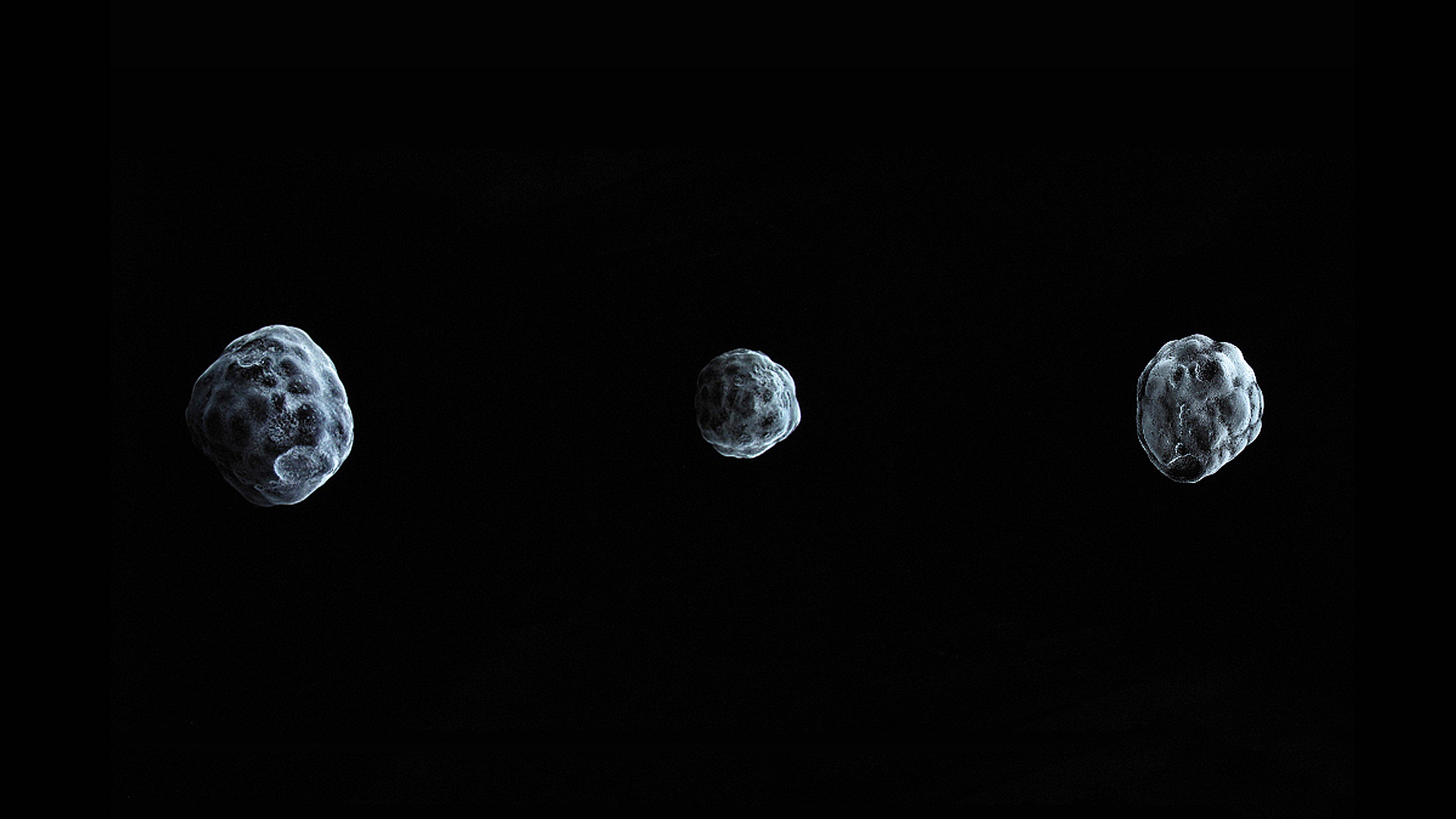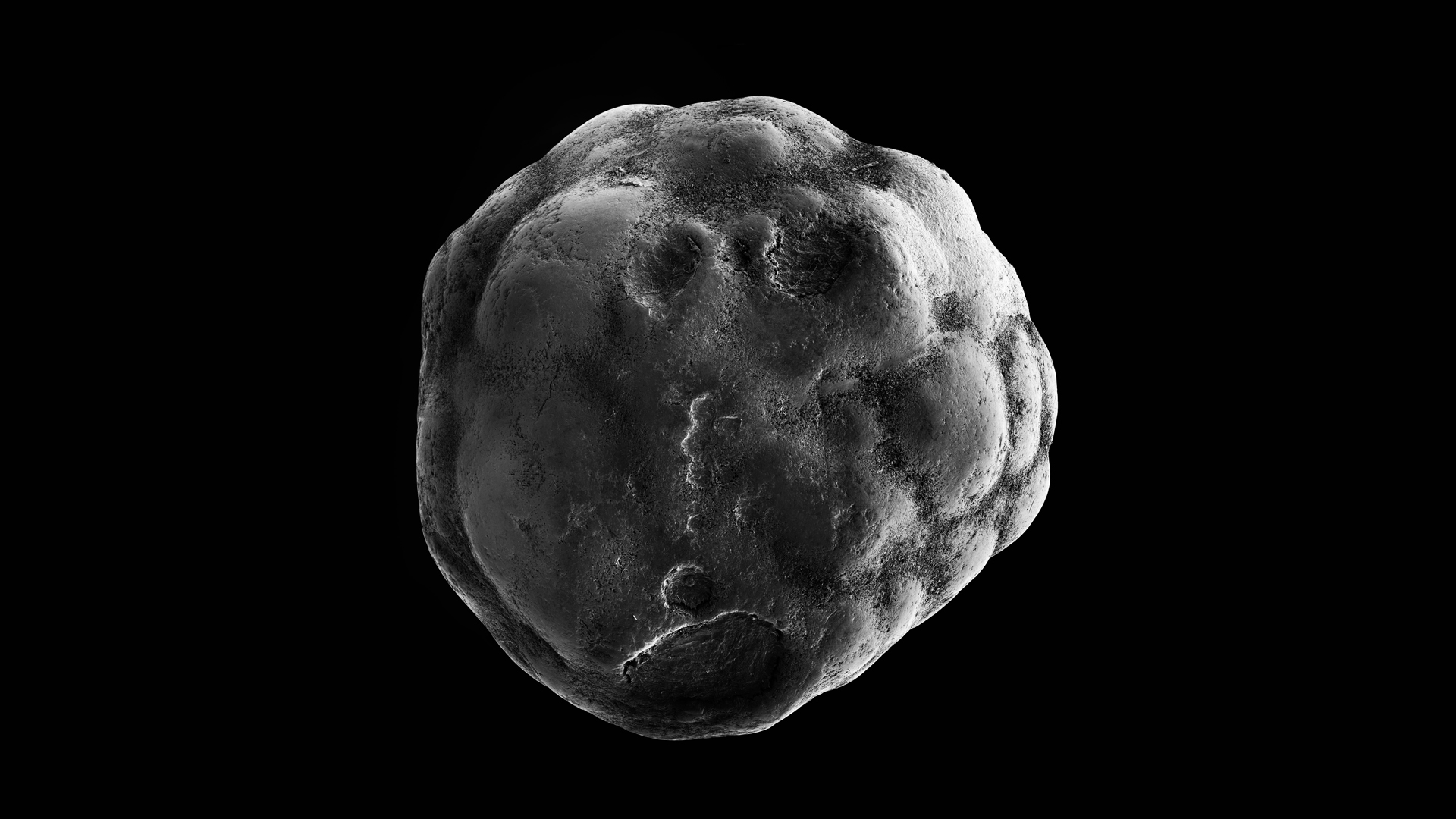Beatrice Haines: Heavenly Bodies
Artist(s):
Title:
- Heavenly Bodies
Exhibition:
Creation Year:
- 2016
Category:
Artist Statement:
My work focuses on relationships between the scientific and emotional, grotesque and beautiful, micro and macro and life and death.
When my grandmother died, I became fascinated by her cherished possessions left behind. Each object acquired a poignancy that had previously not existed. Although void of life, her house took on the role of a museum of personal antiquities and a proof of her existence. I held onto the memory of my grandmother by recording as many objects and traces as I could; scuffs on the carpet, tea stains, strands of hair left in her comb.
In ‘Heavenly Bodies’, a scanning electron microscope was used to visualize my grandmother’s gallstones in minute detail. Each tiny stone was increased in scale and exhibited glowing in a dark room, resembling meteorites. Materials within the body are likened to materials in space. Like some meteorites, gallstones grow through a gradual process of accretion. They could also be compared to human pearls as like a pearl they can contain calcium carbonate, yet they are generally viewed as grotesque. The re-appropriation of these forms perceived as mundane to the outsider, prompts questions about the nature of beauty and human perception.
Since this experience, my artwork has been heavily influenced by traces. Although the human is often absent, the object left behind acts as an anthropomorphic portrait that, like forensic evidence, tells its own story. However, this trace harbors its own secrets and is sometimes not what it seems. Objects that hold a personal resonance are raised to the status of relics despite their interpretation as mundane by the outsider. The re-appropriation of such objects gives them new life and meaning.
Whilst taking on the importance of a relic, the subject is treated in a similar way to a scientific specimen and made to look sterile despite its emotional value. It is not only dehumanized in this way but makes us question our preconceived views of such things conditioned into us from infancy.
As well as a scientific aesthetic, I employ scientific methods. Electron microscopes measure the topography of the specimen. Like the Hubble space telescope, I use a process of collage to gather data and construct a complete image. This method allows me to accurately and intricately record an object. My ‘specimen’ is excessively and obsessively recorded. It is both cherished and violated in its study; a victim of voyeurism and the gaze.
Technical Information:
Media Used: Scanning Electron Microscope, Adobe Photoshop.






